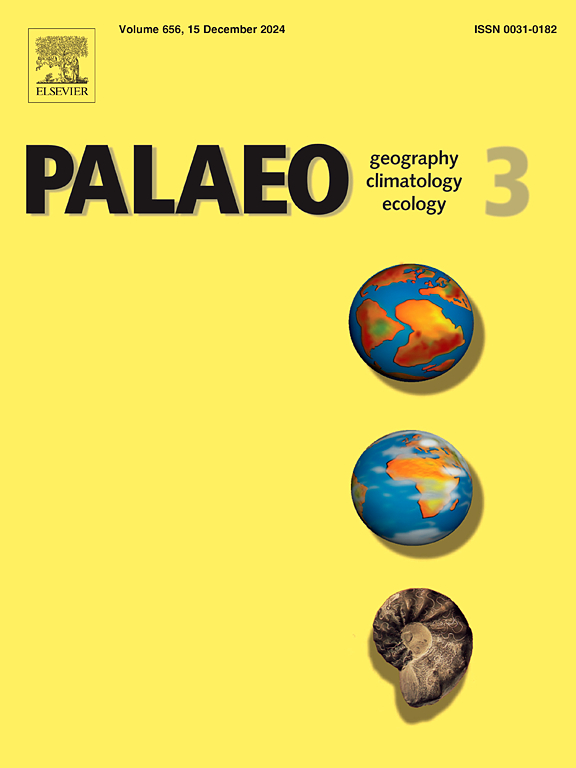Palaeosols interbedded with overland flood deposits in a Holocene slope alluvium succession, Serra do Pasmar, Southeast Brazil: Implications for palaeoclimate evolution and anthropogenic influences
IF 2.6
2区 地球科学
Q2 GEOGRAPHY, PHYSICAL
Palaeogeography, Palaeoclimatology, Palaeoecology
Pub Date : 2025-02-05
DOI:10.1016/j.palaeo.2025.112795
引用次数: 0
Abstract
A Holocene sandy succession of Histosol, “lower interval deposits”, Spodosol and “upper interval deposits”, located at Serra do Espinhaço, SE Brazil, is interpreted as slope alluvium deposits, formed by unconfined water flows at the foot of hillslopes, near the sediment source area. This integrated study of macroscopic, micromorphological and geochemical features of this succession identifies the formative mechanisms that controlled the accumulation of the interbedded palaeosols and deposits.
The “lower interval deposits” and “upper interval deposits” represent the “construction” of a slope alluvium, i.e., the active sedimentation of material, previously weathered and stored on the adjacent bedrock areas, to form slope alluvium. The two palaeosols (Histosol - dated 8339–8049 cal yr BP; Spodosol – dated 1530–1404 cal yr BP) reflect the phase of “accumulation” and pedogenesis on the slope alluvium. The transition from the Histosol to “lower interval deposits” correlates with a sharp decrease of Araucaria forest likely driven by climate change. The transition from the Spodosol to “upper interval deposits” reflects anthropic fire-driven disruption of the original savannah vegetation. Dense vegetation cover promoted pedogenesis by sheltering deposits from erosion and enhancing intense weathering on the adjacent bedrock. Reductions in vegetation cover exposed weathered material on the bedrock, facilitating its erosion, transport and sedimentation on the slope alluvium.
Climatic or anthropogenic factors, which drove an increase and reduction in vegetation cover, appear to have been the primary variables controlling the development of slope alluvium successions in this Holocene inland cratonic area.
求助全文
约1分钟内获得全文
求助全文
来源期刊
CiteScore
5.90
自引率
10.00%
发文量
398
审稿时长
3.8 months
期刊介绍:
Palaeogeography, Palaeoclimatology, Palaeoecology is an international medium for the publication of high quality and multidisciplinary, original studies and comprehensive reviews in the field of palaeo-environmental geology. The journal aims at bringing together data with global implications from research in the many different disciplines involved in palaeo-environmental investigations.
By cutting across the boundaries of established sciences, it provides an interdisciplinary forum where issues of general interest can be discussed.

 求助内容:
求助内容: 应助结果提醒方式:
应助结果提醒方式:


